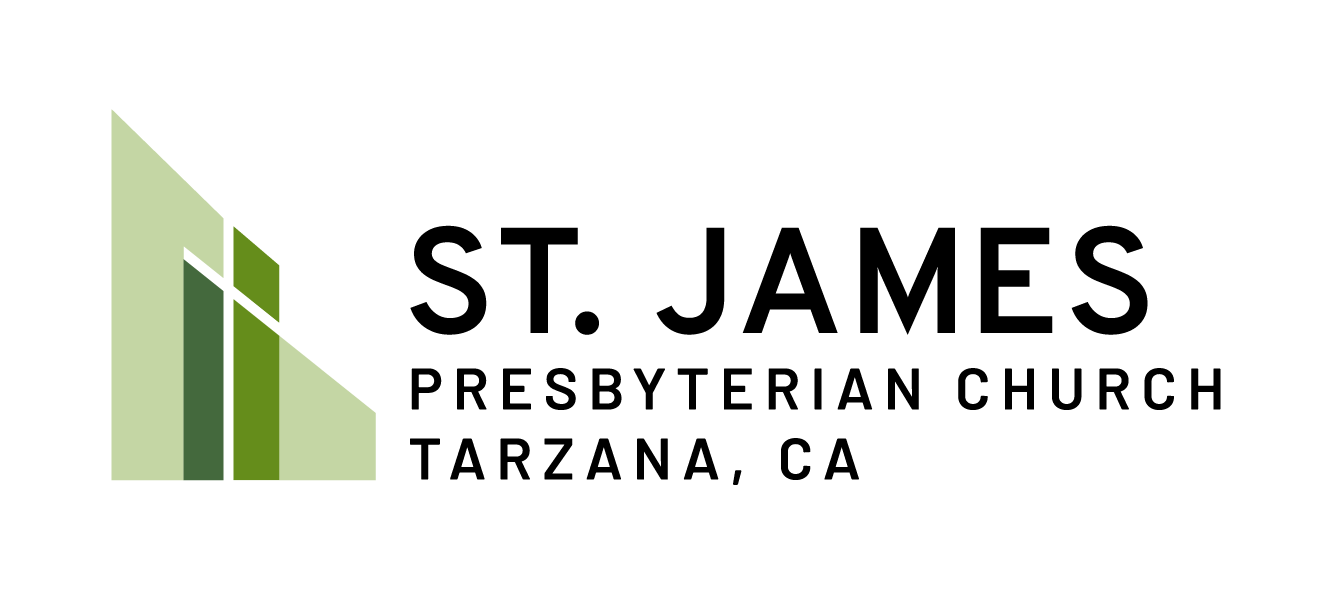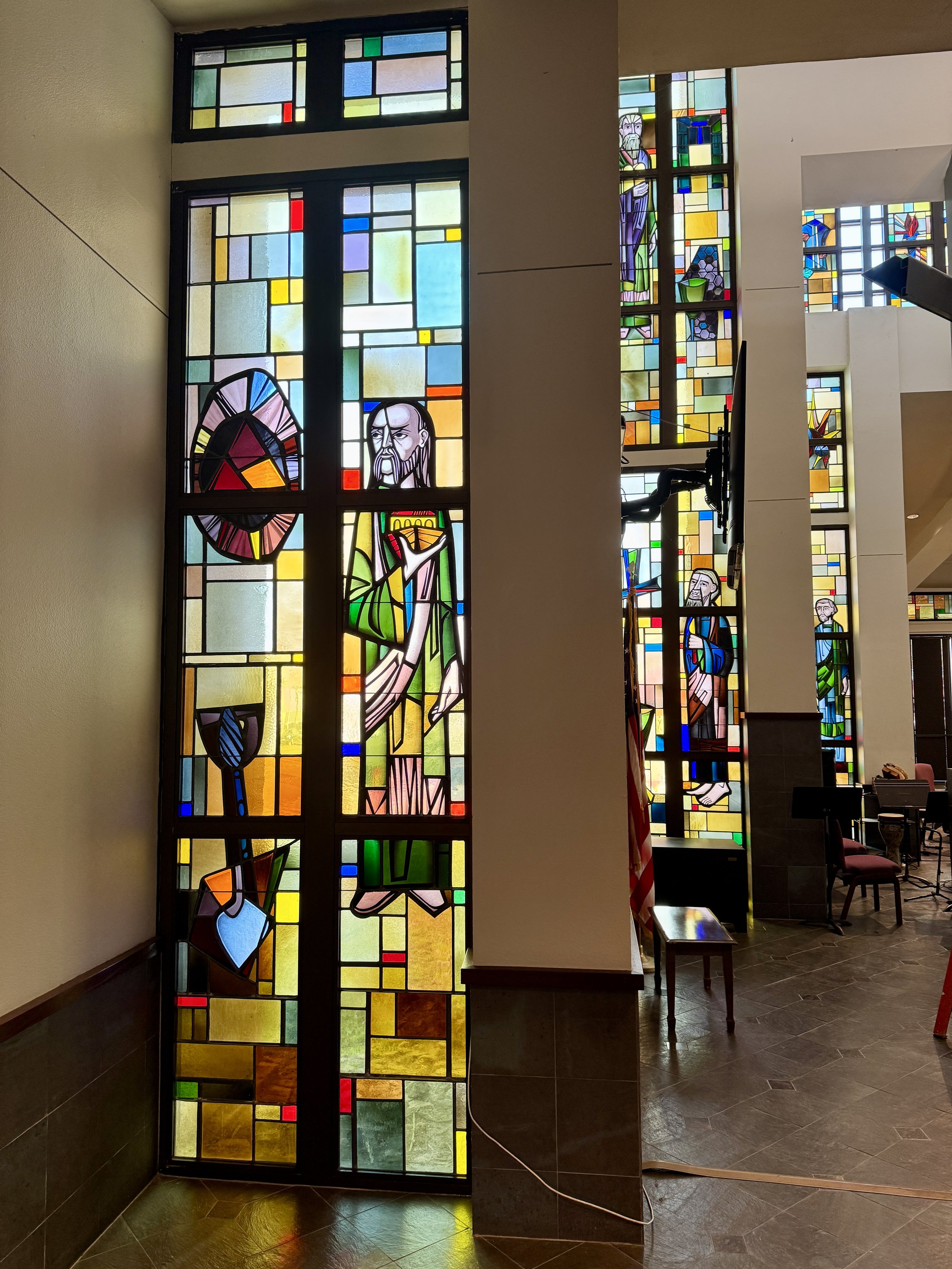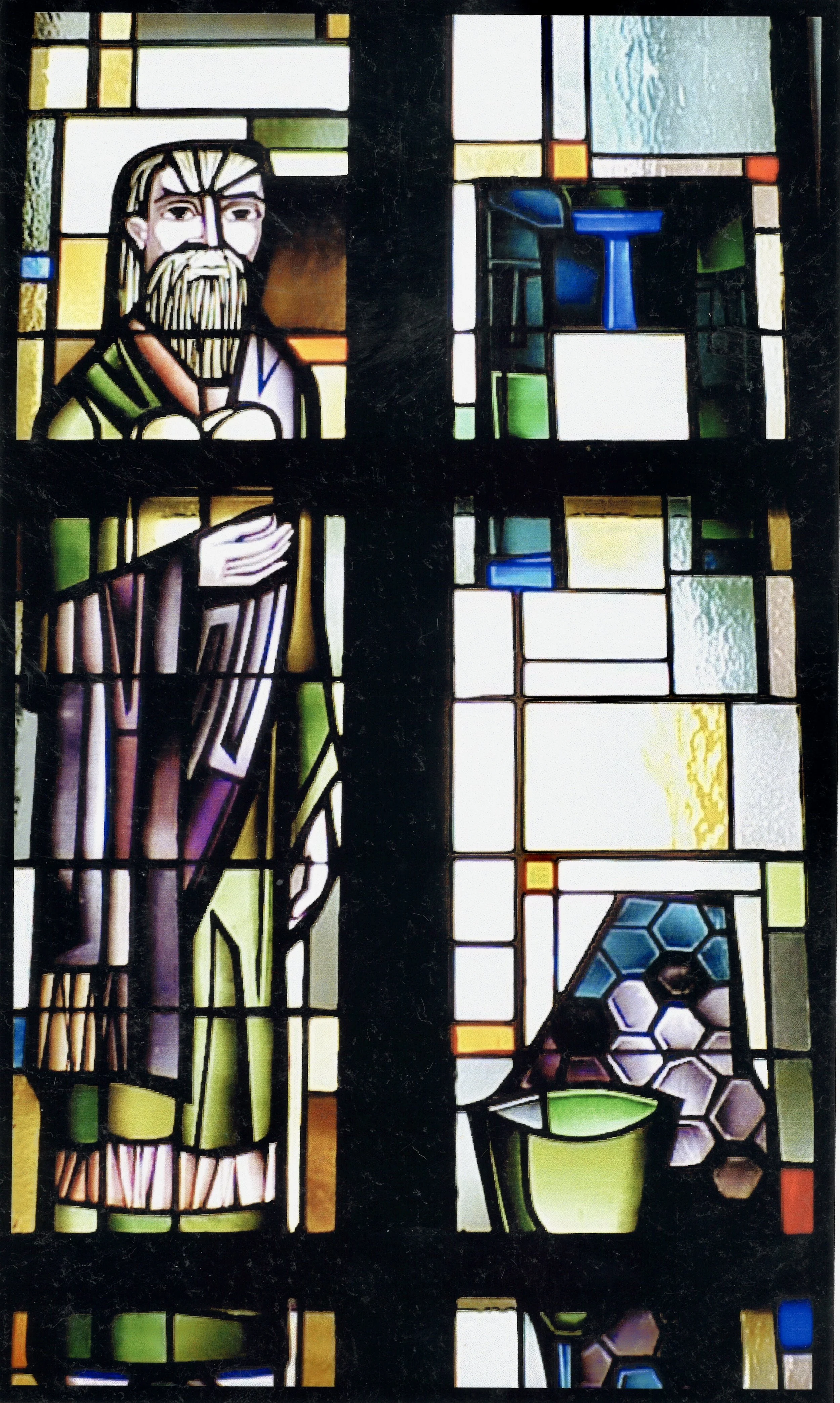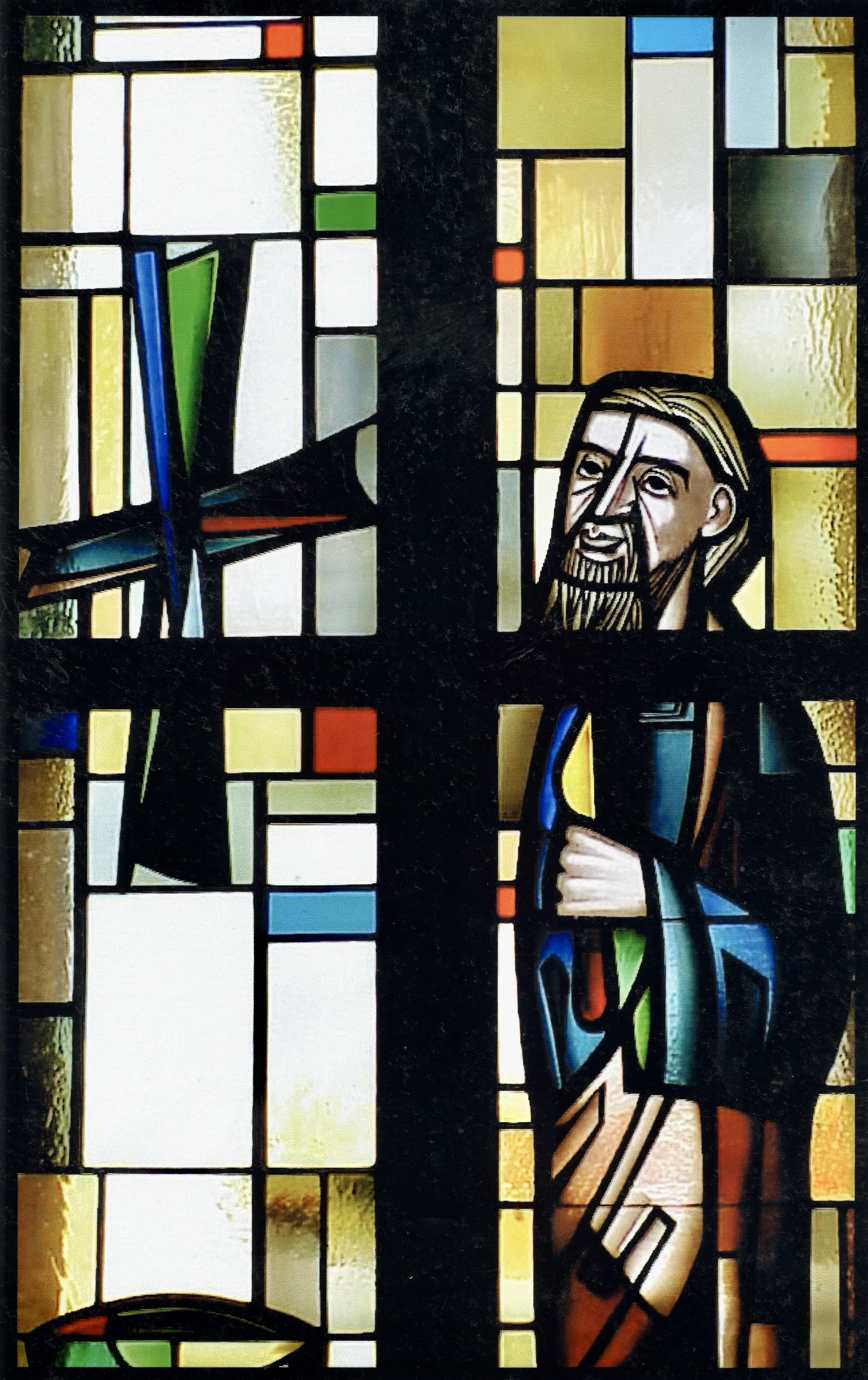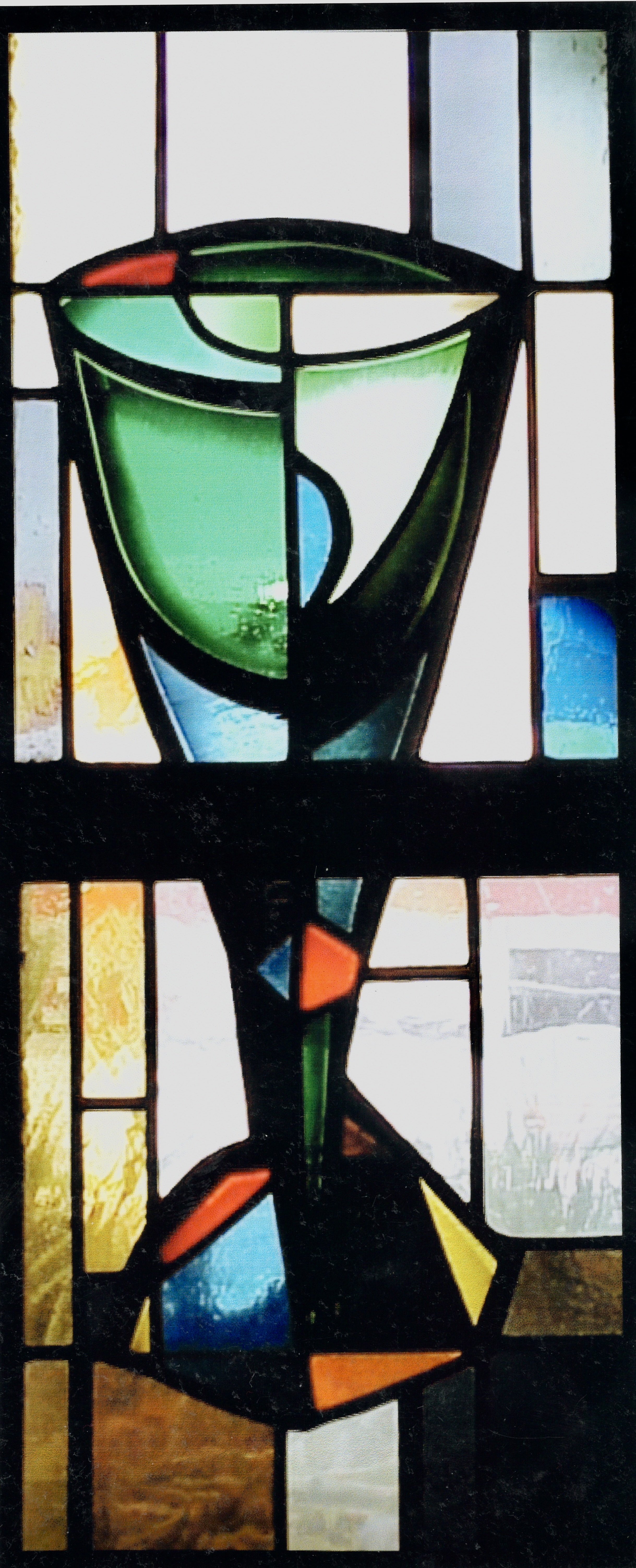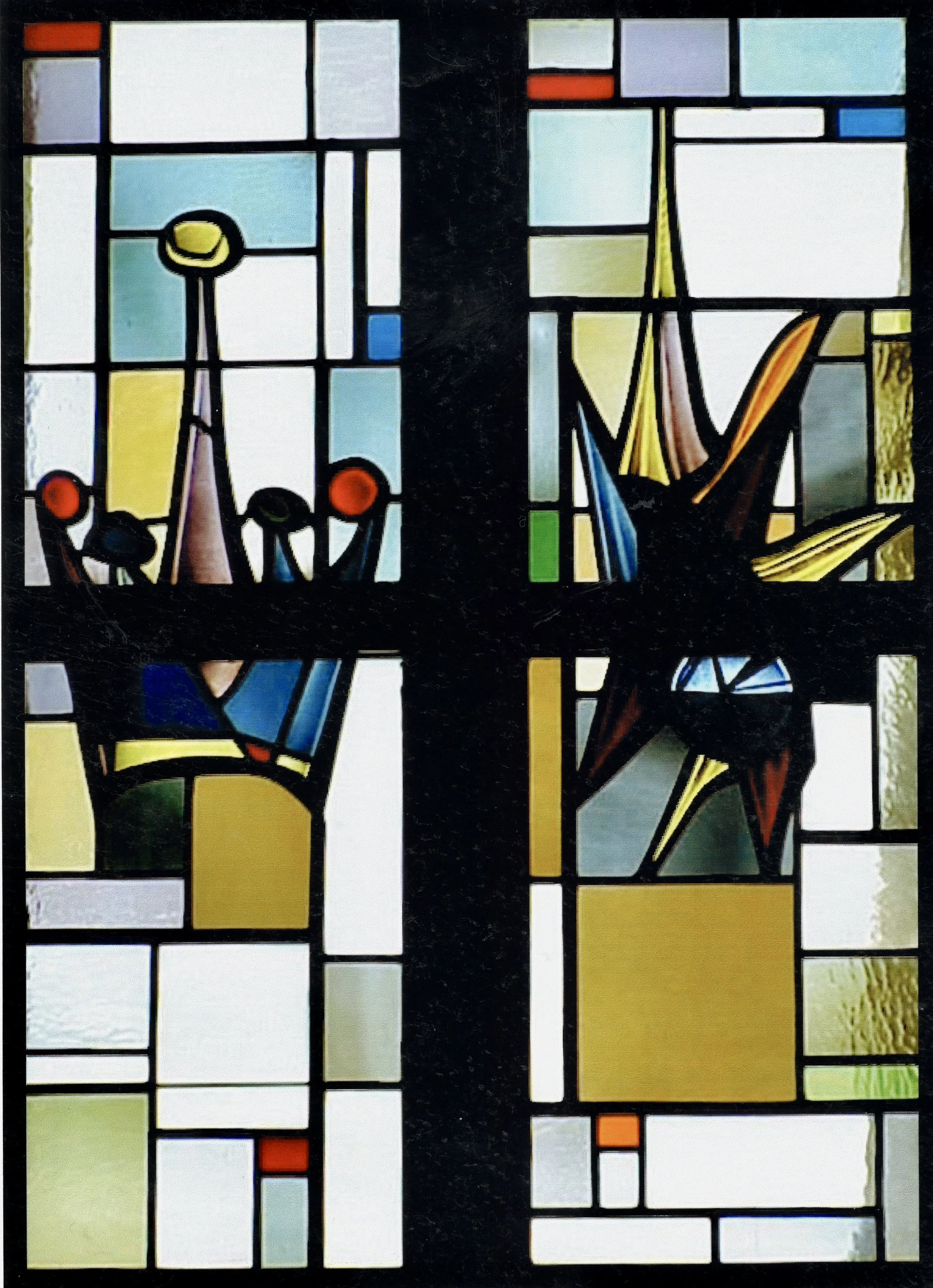North Windows, on the Chancel
View of the North Windows, from west to east. The north windows contain imagery related to the Old Testament. Descriptions here go from top to botton, left to right.
Noah, direct descendant of Adam and Eve through their third son, Seth holds the Ark. When God decided to destroy wicked man, Noah and his family were chosen to take two of every sort of creature into the Ark before the great flood gave the world a fresh start. Raved Equilateral Triangles represent God the Father and Creator.
Spade and Distaff, represent Adam and Eve and the curse of toil, after being expelled from the Garden of Eden. A distaff is used in spinning and making fabric.
Moses, North Windows.
Moses holds the Tablets of the Law, the Ten Commandments, written on two tablets of stone (Exodus 17:5,6.) The Doorway with Crosses (upper right) represents the deliverance from bondage in Egypt. The Vessel of Milk and Comb of Honey are emblems describing entry into the Promised Land. Honey, because of its sweetness and purity, represents the work of God and the ministry of Christ. Paradise, the reward of the faithful, is known as "the land of milk and honey."
Abraham, North Windows.
Abraham holds a knife representing his willingness to sacrifice his son Isaac when his obedience was tested for by the Lord God. The Bundle of Wood in the Form of a Cross represents Isaac. The cross is one of the oldest of Christian symbols representing Christ's sacrifice upon the cross and the symbol of salvation and redemption.
Detail, Abraham, North Windows.
The Chalice is the cup used at Holy Communion and is a symbol of the Christian faith. It represents Melchizedek, a priest of the Hebrews.
North Windows, Bottom of Tower.
The Crown, represents King David who was king over all Israel. A crown is the mark of victory or distinction. The Fiery Chariot represents the Prophet Elijah. In 2 Kings 2:11 "...there appeared a chariot of fire...and Elijah went up by a whirlwind into heaven." Chariots represent the power of God in nature. Flames are symbolic of religious fervor.
The prophet Isaiah, who predicted the coming of Christ, holds tongs and a burning coal. Coal is a metaphor for kindling of a fire, the flames proceeding from the Lord who came down upon Sinai in smoke and fire. The Scroll suggests the gifts of a great writer of the Old Testament and represents the Prophet Ezekiel. His vision, expressed in Ezekiel 1:5,10, anticipates the coming of the four evangelists.
The Cistern represents the Prophet Jeremiah. A cistern is a reservoir for holding or collecting water, water being the symbol of cleansing and purifying. Empty cisterns were sometimes used as prisons and Jeremiah was thrown into one (Jeremiah 38:6). Water represents the waters of eternal life. Water, mixed with wine, has come to denote Christ's humanity; the wine His divinity.
